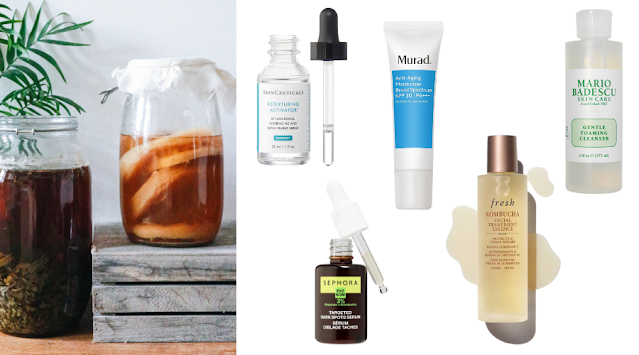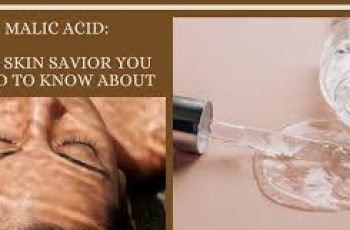This all-around product regulates sebum production, reduces redness, and brightens your complexion.
Niacinamide has become one of the most talked-about buzzwords in skincare, and for good reason. The super-active ingredient treats a wide range of skin concerns at once. That’s why it’s important to choose the best niacinamide serum to incorporate into your skincare routine.
This ingredient, a form of vitamin B3, is used alone in face serums and creams, but works even better when combined with other skin-strengthening ingredients. “B3 is an essential nutrient your body needs,” says Purvisha Patel,
MD, board-certified dermatologist and founder of Visha Skincare.
“Niacinamide is nearly universal and causes little to no irritation, making it a very versatile ingredient,” says Elyse Love, M.D., a board-certified dermatologist in New York City.
“This powerful ingredient soothes the skin barrier, reduces common irritation associated with a range of skin conditions, and helps improve overall skin hydration, reduce oiliness, and even skin tone,” she explains.
Dr. Patel also adds that the ingredient has significant skin-brightening effects “because it affects melanocytes, which play a role in skin pigmentation.” It’s found in products that treat skin blemishes and acne scars.
Since niacinamide also reduces irritation, “it may lessen the effects of other anti-aging ingredients that can irritate the skin, such as wrinkle-smoothing retinol or exfoliating alpha hydroxy acids,” Dr. Patel adds.
Here’s how we picked the best niacinamide serums. We had the expert opinions of Dr. Patel Love and Annie Gonzalez, MD (board-certified dermatologists at Riverchase Dermatology in Miami) and insights from hundreds of customer reviews to
narrow down the best products.
Now that you know the facts about this ingredient, you can give your skin the glow it deserves. Here are the best niacinamide serums you should try, according to experts and shoppers.
1. The Ordinary Niacinamide 10% + Zinc 1% Serum. “This is one of the best options on the market, and it’s also affordable,” says Dr. Love. “It combines the powerful ingredients niacinamide and zinc, which is another great
anti-inflammatory and calming ingredient.
It’s also a lightweight option to complement your acne care routine. I also use this serum because it’s cruelty-free and vegan. Pat it on your face morning and night, and follow up with a rich cream or moisturizer,” she advises. It’s also hard to find for under $15.
2. Glossier Ultra-Pure Niacinamide + Zinc Serum. The ingredients niacinamide and PCA zinc (which shrinks clogged pores) in this serum are so lightweight that you can barely feel them on your skin.
They’re the ideal combination to balance oil production and keep pores unclogged while retaining much-needed moisture. And since it’s fragrance-free, it won’t irritate your skin.
3. La Roche-Posay Pure Retinol Face Serum with Vitamin B3. If you haven’t found your go-to daily serum yet, this Pure Retinol Face and Neck Serum will be a dream come true.
Skin feels smoother, more hydrated, and refreshed immediately after using this product. It’s also a customer favorite, with over 1,500 five-star reviews on Amazon.
Plus, Prevention’s editor-in-chief loves that it doesn’t irritate her sensitive skin.
4. Vichy Minerals 89 Prebiotic Face Serum. “This serum with hyaluronic acid, niacinamide, and probiotics helps soothe irritated skin and fight visible signs of aging and stress,” says Dr. Love.
“Most of my patients with dry skin use it in conjunction with prescription topical medications. Apply two pea-sized drops to clean skin morning and night as the first step in your routine.”
5. INKEY List Niacinamide Oil Control Serum. This affordable and effective serum contains 10% niacinamide and is a fan favorite.
In addition to reducing oil production and fading blemishes, niacinamide can also reduce redness caused by acne. And the ingredient hyaluronic acid is hydrating without leaving a greasy feeling.
6. Peter Thomas Roth PRO Intense Niacinamide Discoloration Treatment. If you’re focused on restoring your skin’s radiance and fighting discoloration, this niacinamide serum is formulated with multiple brighteners.
In addition to niacinamide, there’s tranexamic acid (which helps reduce the appearance of dark spots) and kojic acid (for brightening) to fight discoloration, says Dr. Patel. Positive reviews predominate, indicating that this product
helps fade scars, acne marks, and hyperpigmentation while improving skin texture.
How to Choose (and Use) the Best Niacinamide Serum. Check the Ingredient List: Regardless of what it says on the package, it’s best to scan the ingredient label and look for “niacinamide” instead of niacin. “Niacin will
“probably convert to niacinamide, but niacin can cause redness and flushing on the skin,” says Dr. Patel.
Use morning and night: The good news is that niacinamide is gentle enough to be used morning and night as part of your skin care routine. As with any serum, apply it after cleansing (to remove makeup, dirt, and oil) and before moisturizing (so it can penetrate the skin more easily).
“I personally incorporate it into my skin care routine and recommend it to my patients regularly,” says Dr. Like . Stick with a niacinamide serum instead of a cream: “The vitamin is water-soluble, and delivered in a serum form
is most effectively absorbed by the skin,” explains Dr. Patel
Look for 2% to 10% niacinamide: “An effective serum should contain 2% to 10% niacinamide,” says Dr. Gonzalez
DQH Knowledge drop: In your 20s, your skin cell turnover decreases. (Cell turnover is a key component in keeping your skin youthful.) You know what else slows down? Your collagen production. Starting in your 20s, collagen decreases by about 1 percent per year. Should you want to prevent fine lines and wrinkles, start by eliminating behaviors that contribute to premature aging. “If it’s bad for you, it’s bad for your skin,” says dermatologist Michel Somenek.
“Cigarette smoking reduces blood flow to the skin and causes premature wrinkling and a dull skin texture. Making the repeated pursed motion to inhale can also cause smoker’s lines. Alcohol and recreational drugs are toxins for the skin that damage its cellular structure and DNA,” Somenek tells us. “The faster you eliminate vices while you are young, the better chance your skin and body have to recuperate.” Also, adopting an anti-aging routine in your 20s is key. After all, the best offense is a good defense. We spoke to Somenek and experts Joshua Ross and Audrey Kunin to find out more.
Keep reading for the best anti-aging products for your 20s, according to skincare professionals.
Sunscreen
“We all know that the sun is the number one cause of skin aging and starting the prevention in your 20s is very important,” Ross says. “The majority of your sun damage won’t start to appear until you’re in your 30s, so don’t wait until you see it surface or you’ll be behind the curve. Stay ahead of it with a good-quality zinc-based sunscreen worn daily.”
Farmacy Green Defense Daily Mineral Sunscreen
An invisible sunscreen with SPF 30, plus botanical extracts meant to protect skin with tons of antioxidants. Bonus: It’s clean and fine to use under makeup.
Bareminerals Complexion Rescue™ Tinted Moisturizer Broad Spectrum SPF 30
Although we recommend you use your SPF and moisturizer separately, we also understand moments when you don’t have time or energy for that extra step. For those times, this bareMinerals moisturizer is a great thing to have on hand.
Vitamin C Serum
“A great introduction to anti-aging is to start with a vitamin C serum in your morning skincare routine,” Ross says. “It’s a powerful antioxidant that will neutralize free radicals and brighten the skin.” He adds that it’s a great way to counteract the effects of the sun’s harmful rays, which, as previously mentioned, are among the biggest causes of premature aging.
Drunk Elephant C-Firma™ Vitamin C Day Serum
The Drunk Elephant C-Firma is a lightweight serum that promises to give skin a glow by combining the brightening powers of vitamin C with ferulic acid, l-ascorbic acid, and vitamin E. The included sodium hyaluronate is meant to replace hydration loss, so you shouldn’t have to deal with any irritation.
Sunday Riley C.E.O. Rapid Flash Brightening Serum
This potent serum is jam-packed with vitamin C (15 percent, to be exact), which means it’s a potential superstar at both brightening skin and dousing it in antioxidants.
Peptides
Using peptides on your skin has many benefits, says Somenek. “The skin barrier is what defends the body against pollution, UV rays, bacteria, and toxins. It can be damaged by several everyday factors. Using topical peptides aids in building a stronger barrier,” he says. “Peptides comprise elastic fibers, which are a type of protein. These fibers help to make skin appear taut and firm. Peptides can also help repair damaged skin, relieve inflammation, and even out skin tone. Some peptides can kill acne-causing bacteria that is common in 20-somethings.”
Kunin agrees, saying, “Peptides are an excellent entry point for supporting collagen.” She recommends looking for face and eye treatments that contain these collagen-boosting powerhouses.
Charlotte Tilbury Magic Eye Rescue Cream
This Charlotte Tilbury super-emollient eye cream has a base of coconut oil and shea butter (read: it’s incredibly hydrating). Botanicals plus peptides are meant to help reduce dark circles and boost collagen, respectively.
This creamy moisturizer serves up potent collagen-boosting peptides and pycnogenol, and antioxidant-rich vitamin C. “Instead of sitting on top of the skin, peptides penetrate the outer layer so they go deep. The ‘signals’ they send tell the cells to produce elastin and collagen, which are needed for youthful-looking skin,” explains Somenek.
At-Home Peel Pads
Remember that skin cell turnover fiasco we talked about earlier? One way to help support it is by exfoliating. “Exfoliation is important to help keep skin fresh and luminous,” Kunin says. She recommends using at-home peel pads as an easy and effective way to exfoliate.
“The goal in your 20s is to fight the slowing pace of cell turnover. It is wise to use products that gently exfoliate, yet still remove oil and other impurities. Products that have Alpha Hydroxy Acids (AHA) or Beta Hydroxy Acids (BHA) are a good choice.”
According to Somenek, you should only exfoliate two to three times a week. “People of all ages are guilty of over-exfoliating and that can be too much of a good thing,” he says.
Dermadoctor Kakadu C Intensive Vitamin C Peel Pad
A few swipes of this Derma Doctor powerful peel pad promise to leave your skin glowing and smooth, thanks to the seven (yes, seven) types of chemical exfoliants, including AHA and BHA. It also contains vitamin C via Kakadu plum extract for added brightening and antioxidant protection.
KEY INGREDIENTS Kakadu plum extract is sourced from the Kakadu plum, a fruit grown in northern Australia. It contains vitamin C, which restores the skin’s natural barrier, increases collagen production, and soothes irritation.
Dr. Dennis Gross Skincare Alpha Beta® Universal Daily Peel Pads
These are the gold standard of peel pads, with a cult following and over 900 five-star reviews on Sephora. They’re easy to use and contain a blend of anti-aging exfoliating acids.
Emollient Night Cream
“In your 20s, you need to start upping the hydration in your skincare routine. You may have been cautious of over-moisturizing because of acne in your teens, but as you enter your 20s, your skin transitions and becomes drier,” Ross says. “I recommend an emollient night cream added into your evening skincare regimen.”
“Twenty-somethings need to make sure that they are not using creams that will clog their pores and cause excess oil production,” says Somenek. Opt for non-comedogenic products.
Cerave Skin Renewing Night Cream
One great choice is the CeraVe Skin Renewing Night Cream, which is a non-comedogenic night cream that leaves skin soft and glowy. It combines the moisturizing powers of ceramides and hyaluronic acid.
RoC Retinol Correxion Max Hydration Creme
“The best night cream ingredients contain retinol, benzoyl peroxide, and/or salicylic acid or hyaluronic acid. The goal is to moisturize, yet remove excess oil,” says Somenek. This Roc Retinol Correxion cream fits the bill as it contains both hyaluronic acid and retinol so it promises to moisturize while also being non-comedogenic.



